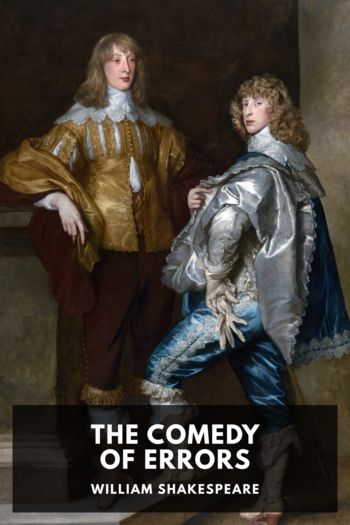The Life of Buffalo Bill William F. Cody (best ereader for academics .txt) 📖

- Author: William F. Cody
Book online «The Life of Buffalo Bill William F. Cody (best ereader for academics .txt) 📖». Author William F. Cody
But shortly afterwards my attention was attracted by the appearance of a body of soldiers, who were forming into a skirmish line, and then I became convinced that it was General Terry’s command after all, and that the redskins whom I had seen were some of his friendly Indian scouts, who had mistaken me for a Sioux, and fled back to their command terribly excited, shouting, “The Sioux are coming!”
General Terry at once came to the post, and ordered the Seventh Cavalry to form line of battle across the Rosebud; he also ordered up his artillery and had them prepare for action, doubtless dreading another “Custer massacre.” I afterwards learned the Indians had seen the dust raised by General Crook’s forces, and had reported that the Sioux were coming.
These manoeuvres I witnessed from my position with considerable amusement, thinking the command must be badly demoralized, when one man could cause a whole army to form line of battle and prepare for action. Having enjoyed the situation to my heart’s content, I galloped down towards the skirmish line, waving my hat and when within about one hundred yards of the troops, Colonel Weir, of the Seventh Cavalry, galloped out and met me. He recognized me at once, and accompanied me inside the line; then he sang out, “Boys, here’s Buffalo Bill. Some of you old soldiers know him; give him a cheer!” Thereupon the regiment gave three rousing cheers, and it was followed up all along the line.
Colonel Weir presented me to General Terry, and in answer to his questions I informed him that the alarm of Indians which had been given was a false one, as the dust seen by his scouts was caused by General Crook’s troops. General Terry thereupon rode forward to meet General Crook, and I accompanied him at his request. That night both commands went into camp on the Rosebud. General Terry had his wagon train with him, and everything to make life comfortable on an Indian campaign. He had large wall tents and portable beds to sleep in, and large hospital tents for dining-rooms. His camp looked very comfortable and attractive, and presented a great contrast to that of General Crook, who had for his headquarters only one small fly tent; and whose cooking utensils consisted of a quart cup—in which he made his coffee himself—and a stick, upon which he broiled his bacon. When I compared the two camps, I came to the conclusion that General Crook was an Indian fighter; for it was evident that he had learned that, to follow and fight Indians, a body of men must travel lightly and not be detained by a wagon train or heavy luggage of any kind.
That evening General Terry ordered General Miles to take his regiment, the Fifth Infantry, and return by a forced march to the Yellowstone, and proceed down that river by steamboat to the mouth of Powder River, to intercept the Indians, in case they attempted to cross the Yellowstone. General Mills made a forced march that night of thirty-five miles, which was splendid traveling for an infantry regiment through a mountainous country.
Generals Crook and Terry spent that evening and the next day in council, and on the following morning both commands moved out on the Indian trail. Although General Terry was the senior officer, he did not assume command of both expeditions, but left General Crook in command of his own troops, although they operated together. We crossed the Tongue River to Powder River, and proceeded down the latter stream to a point twenty miles from its junction with the Yellowstone, where the Indian trail turned to the southeast in the direction of the Black Hills. The two commands now being nearly out of supplies, the trail was abandoned, and the troops kept on down Powder River to its confluence with the Yellowstone, and remained there several days. Here we met General Mills, who reported that no Indians had as yet crossed the Yellowstone. Several steamboats soon arrived with a large quantity of supplies, and once more the “Boys in Blue” were made happy.
XXXI Dangerous WorkOne evening while we were in camp on the Yellowstone at the mouth of Powder River, I was informed that the commanding officers had selected Louis Richard, a half breed, and myself to accompany General Mills on a scouting expedition on the steamer Far West, down the Yellowstone as far as Glendive Creek. We were to ride on the pilot house and keep a sharp lookout on both sides of the river for Indian trails that might have crossed the stream. The idea of scouting on a steamboat was indeed a novel one to me, and I anticipated a pleasant trip.
At daylight next morning we reported on board the steamer to General Mills, who had with him four or five companies of his regiment. We were somewhat surprised when he asked us where our horses were, as we had not supposed that horses would be needed if the scouting was to be done on the steamer. He said we might need them before we got back, and thereupon we had the animals brought on board. In a few minutes we were booming down the river, at the rate of about twenty miles an hour.
The steamer Far West was commanded by Captain Grant Marsh, whom I found to be a “brick.” I





Comments (0)